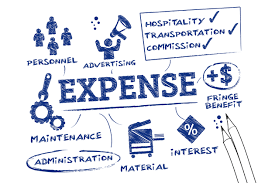In sales, you must understand what the core drivers are for a business owner when he or she is making a business decision, especially about buying your product or service. In the business owner's mind, they are relating everything they evaluate to three key core business drivers: revenue, expenses and risk. They are asking these fundamental questions when looking at an offering:
1) Does this offering protect or increase my revenue? 2) Does this offering control or reduce my expenses? and 3) Does this offering reduce or control my risk?
As a sales rep, understanding those core issues and tying your offering into how they impact those areas, will greatly set you apart from other sales reps who are just selling features and benefits and making promises. The way to tie your offering into those areas is to ask lots of questions such as "Mr. Business owner, how do you see our offering impacting your revenue stream?" or "Others have seen a 10% reduction in expenses by implementing these new processes; do you see yourself getting a similar benefit? " "One of the key focuses of our software is to reduce the chance of a customer falling through the cracks and you losing the business or having a liability charge for negligence in serving your customer. Share with me how you see our offering impacting your business in this way."
Last week I focused on revenue. This blog will expound upon controlling or reducing expenses as the major buying criteria.
Controlling Expenses
When the focusing is on controlling expenses, there is generally another goal that is impacting that focus. The goal could be to grow with expenses that are flat. It could be to reduce the amount of growth of expenses. For instance look at increasing healthcare premiums, many companies are now shifting to a double carrier type of plan to control the ever increasing cost of health insurance. By implementing a double carrier plan, the annual premiums go up only 12% versus the 25% increase if stayed with the existing plan. In manufacturing, a plant may have capacity for more production and thus great effort is spent on training employees to be more effecient to get more production at the same fixed costs.

Other areas where great emphasis is placed in controlling expenses is employee benefit plans, travel expenses, and the cost of materials.
Reducing Expenses
A main focus of all business owners is reducing expenses to increase net profit or to protect existing profit becuase sales revenue or sales margins are declining. As a sales rep, the biggest challenge of focusing on reducing expenses is that too many sales reps promise this will "save you money." If you use that promise, you sound like GEICO. The little gecko can make that promise; you shouldn't. It is a very overused promise that causes people to be skeptical.. The best way to approach expenses reduction is to not make claims about saving them money, but engage in a discussion of how operational costs are reduced or business expenses reduced. In reality, no offering ever saves the owner money; it just reduces expenses. It is the boss or owner's choice as to whether he saves it or not. What an offering does is reduce expenses allowing the owner to choose where he decides to allocate those expense reductions - put them in the bank or spend money in other places of the business.
Joanna Wiebe's blog rants on this issue of promising to Save Time and Money as a very overused phrase. Pat Lyer bemoans the over used phrase of saving you money in his blog in the Legal Nursing Industry. The article is a good read and actually covers many of the points I am making about offering substance versus promises in terms of managing expenses or actually focusing on desired outcomes.
If you offering actually does reduce expenses, be sure to have tangible evidence of how this works. Share stories of other clients who have achieved the expense reduction and ask the prospect if they see the potential for similar results. Do not go in claiming to save the day by saving them money. Through a discussion of business issues, let the prospect tell you that he can save money (It is OK if he uses that phrase) by implementing your solution. Focuses on tangilbe Return On Investment and discuss how success can be measured.
As you engage in these discussions, probe to see what the underlying motive is, even a personal motive. The buyer could be looking for a promotion, save his job, or he may want to spend money in other areas. If it is a business owner, in the back of his mind he may be thinking that increased profits will buy him a new boat or get his company ready to sell.
CONCLUSION:
In the world of sales, it seems everyone is promisiing to save money,so be careful how you position your offering. It is better to use the language of the buyer in discussing expenses such as Cost of Capital, budget alignment or ratios that are used to judge effectiveness or efficiency. Engage in discussions, don't make promises unless you can totally back those up with fact.

